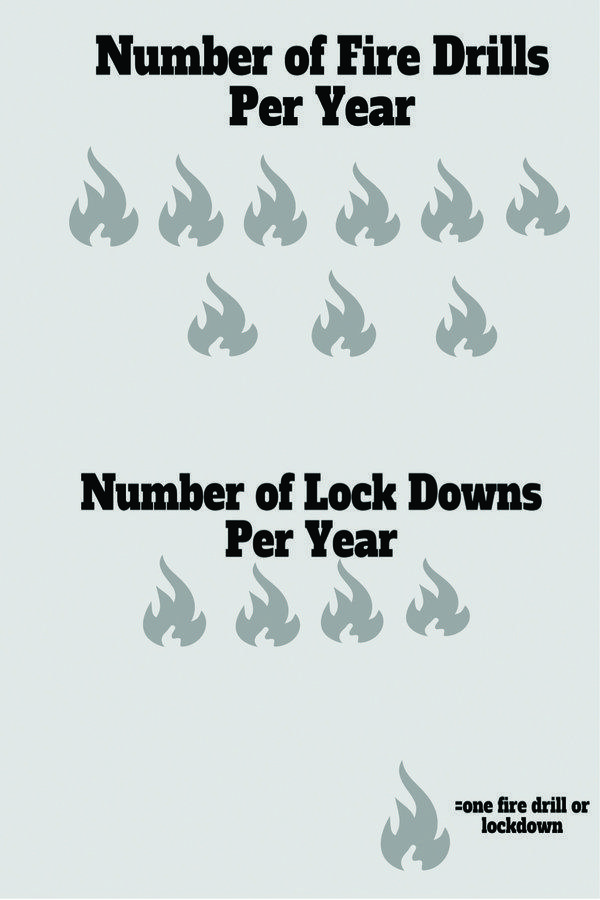Fire drills and lock downs need planning
When fire alarms ring there are two kinds of people: those who rejoice, thankful for a few minutes of break, and those who moan “Not this again! We just had a fire drill last month!” I sympathize with the latter. While fire alarms and lockdowns allow for mental rejuvenation, content gets thrown on the backburner. Fire and lockdown drills take vital learning time away from students.
We all know where to exit in case of a fire, we all know to keep our mouths shut if an emergency called for invisibility on the parts of students and staff — this is common knowledge. Not to mention most (if not all) students have practiced these drills since they were knee high to a grasshopper.
Let’s talk hypothetically for a moment, shall we? If there were to be a fire in the culinary building, or an explosion in the science building, who truly believes that the student body would act orderly and remember the drills? How many students would be caught running, not walking calmly like we were taught? How many students would be caught with their cell phones calling loved ones, not ignoring the texts like we were taught? How many students would be caught exiting through random doors, not the ones designated by classroom? See my point yet? Drills leech precious time attempting to teach the unteachable.
Students in the bus barn also find the fire drills silly. Students feel that leaving a building towards the “burning” one is ridiculous and makes no sense when it comes to student safety.
Do I even need to mention the fact that we are forced to stand outside in Arizona, sometimes in the heat of the late afternoon, in the parking lot? Not only does this pose a risk for heat exhaustion and dehydration, but even before fifth hour parents are lining up to pick up their children. When fire drills fall during sixth hour, students feel unsafe, as if they are about to be run over.
Another issue is the frequence of these fruitless drills. Fire drills must be executed once a month, while lockdowns twice a semester. With lockdowns, principal Dan Serrano explains “we do, per semester, one announced and one unannounced.”
Fire drills are mandated per law, and lockdowns by district. Lockdowns are taken very seriously: “We have anywhere from eight to ten police officers that come, and they go around the whole campus,” Principal Serrano confirms.
Now, real evacuations for fires on campus count as one of the mandatory drills. For instance, the evacuation on Feb. 5 counts as February’s fire drill, but if another evacuation were to occur again in February, the drills “points” do not roll over. When real evacuations come in the same month as the drills, but after the drill was performed, the practice drill is a waste of time
If all lockdowns and fire drills were announced, however, teachers could plan for the loss of instruction. This way, students would not fall behind in specific hours while others have extra time to practice newly acquired skills.
Unfortunately, there is no way to get these nuisances reduced let alone discarded, due to the laws and district policies, but there are ways to practice safety procedures without losing precious teaching time.

Dayna Miller is the Managing Editor for the Precedent. This is her second year working for the Precedent, and was previously the Opinion's Editor. She...


